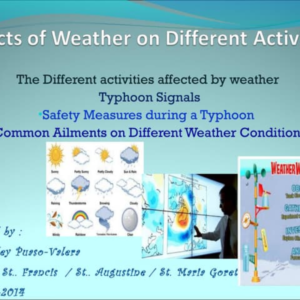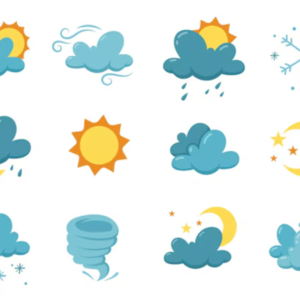Weather
How Weather Patterns Affect Daily Life
Weather patterns affect daily life in Commuting
Traffic Congestion and Road Safety
Weather conditions can significantly impact traffic patterns and road safety. Rain, snow, and ice can lead to slippery roads, increasing the risk of accidents and making driving more hazardous. According to the Federal Highway Administration, wet roads are responsible for 75% of weather-related vehicle crashes. Drivers should adjust their speed and maintain a safe distance from other vehicles during adverse weather conditions to mitigate these risks.
Public Transportation
Weather patterns also affect public transportation systems. Heavy rainfall can lead to flooding, which might disrupt bus and train schedules. In winter, snow and ice can delay or halt services altogether. It’s important for commuters to stay informed about weather forecasts and plan alternative routes or modes of transportation when necessary.
Personal Transportation Choices
Weather conditions can influence personal transportation choices. On sunny days, many people prefer walking or biking, whereas inclement weather might lead individuals to choose driving or public transport. Being aware of the weather forecast can help people make better decisions about their daily commute.

Weather patterns affect daily life in Outdoor Activities
Seasonal Activities
Weather patterns determine the range of outdoor activities people can enjoy. In summer, warm weather invites activities like hiking, swimming, and picnics. Conversely, winter brings opportunities for skiing, snowboarding, and ice skating. Adapting to seasonal changes can enhance enjoyment and safety during outdoor activities.
Extreme Weather Conditions
Extreme weather conditions, such as heatwaves, thunderstorms, and blizzards, can pose risks to outdoor activities. Heatwaves can lead to heat exhaustion and dehydration, while thunderstorms can create dangerous conditions for outdoor sports. It’s essential to monitor weather warnings and take appropriate precautions to stay safe.
Gardening and Home Improvement
Weather patterns also impact gardening and home improvement projects. Rain and temperature fluctuations can affect plant growth and the timing of outdoor chores. Planning gardening activities around the weather forecast can help ensure successful outcomes and prevent damage to plants and equipment.

Weather-Related Health Considerations
Impact on Physical Health
Weather patterns can influence physical health in various ways. Cold weather can exacerbate conditions like arthritis and asthma, while hot weather can lead to dehydration and heat-related illnesses. Individuals with pre-existing health conditions should take extra care to manage their symptoms in response to changing weather.
Mental Health and Mood
Weather can also affect mental health and mood. Seasonal Affective Disorder (SAD) is a type of depression that occurs during the fall and winter months when daylight hours are shorter. Conversely, some people experience increased energy and improved mood during sunny, warm weather. Being mindful of these effects can help individuals manage their mental well-being throughout the year.
Preparing for Weather Changes
Checking Weather Forecasts
Staying informed about the weather forecast is crucial for making plans and preparations. Utilizing weather apps, websites, and local news can provide timely updates and alerts. Planning ahead can help individuals avoid disruptions and stay safe during adverse weather conditions.
Emergency Preparedness
Extreme weather events, such as hurricanes and tornadoes, require special preparation. Having an emergency kit, creating a family emergency plan, and staying informed about local evacuation routes are essential steps in preparing for severe weather conditions.
Adjusting Daily Routines
Adjusting daily routines based on weather patterns can enhance productivity and comfort. For example, scheduling outdoor activities during favorable weather conditions and using indoor spaces effectively during inclement weather can help individuals maintain a balanced lifestyle.


